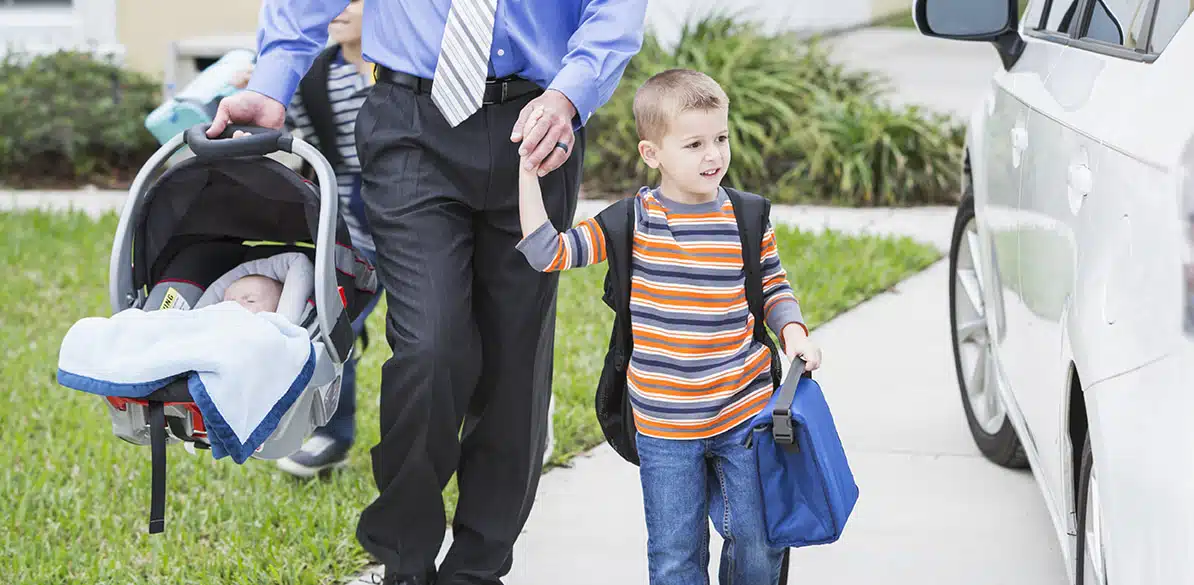Using a baby carrier for the first time
Safety, comfort and ergonomics for the newborn baby

Road Safety
In some countries, like the UK, in order to register a newborn baby, you must provide proof of how the baby will travel when leaving the hospital. For this reason, it is common practice to leave the hospital using a baby carrier. This is not actually compulsory, but, as happens when something becomes habitual, many British people, out of habit, understand that it should be done like this.
In fact, the baby carrier is the most suitable restraint system to meet the needs of the newborn. This restraint system is designed not only for safety, but also for comfort and ergonomics.
Knowing that the best option for leaving the hospital is a baby carrier, let’s see what choices we have, their advantages, and recommendations for the first time we use them.
Any restraint system has two steps that determine its use: how the system is installed in the car and how the child is secured into the seat.
First of all, it is important to know that baby carriers can be anchored into the vehicle in two ways: the car’s three-point seat belt, or a base with ISOFIX anchors and a support leg. A few months ago we highlighted the advantages and disadvantages of using the baby carrier base.
If you ultimately decide to use the car’s seat belt to attach the baby seat, we would like to offer a few recommendations:
- It is always safest to place the baby carrier facing backwards with respect to the car’s direction of travel.
- The belt should be passed through all the guides indicated by the manufacturer and in the order specified.
- All the slack in the belt should be removed, making sure the belt is as tight as possible.
- Once the baby has been placed in the carrier, the tension must be checked again, as the child’s weight can cause a loss of tension.
- This check should be made each time the child is put in the baby carrier.
- Baby carriers have carrying handles and many manufacturers use these as a protection system in the event of a rear-end collision. If this is the case with our baby carrier, we must make sure we place the handle in the position indicated in the manufacturer’s instruction manual. It is vitally important not to miss out this step.
If we opt for a baby carrier with a base, the installation is much simpler, but we must still consider the following:
- The base must be installed correctly, with no gap between the seat and the base.
- When installing the baby carrier, make sure that it is correctly fastened. Typically, bases show that they have been installed correctly with a green mark or indicator.
- Some bases allow you to turn the baby carrier towards the door, so that the baby can be put in more easily. In no case is this position, with the baby facing forward, valid for use during a journey. For this reason, we must always make sure that we reposition the baby carrier so that it faces backwards.
- It is important to make sure that the base support leg is correctly positioned and that the ISOFIX connectors are properly fastened.
Once the baby carrier has been properly attached to the vehicle, the baby must be correctly positioned. Here are our basic recommendations for this:
- Set the harness height to the correct position. Normally this position is at the same height as the baby’s shoulder.
- Do not place the baby in the seat wearing a coat or thick clothes. It is better to keep the baby warm with a blanket once they are in the carrier. We recommend that you read the article “What happens if we put a child wearing a coat in the child seat”.
- Put the baby in the child seat making sure that there are no “twists” in the harness straps, fasten the buckle and, before tightening it, remove the slack from the baby’s pelvis straps. Once all this is done, you have to tighten the harness so there is no slack.
Following these simple steps will ensure that you correctly install both the child restraint system and the child.
